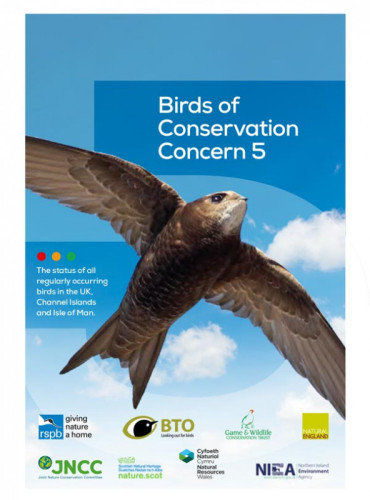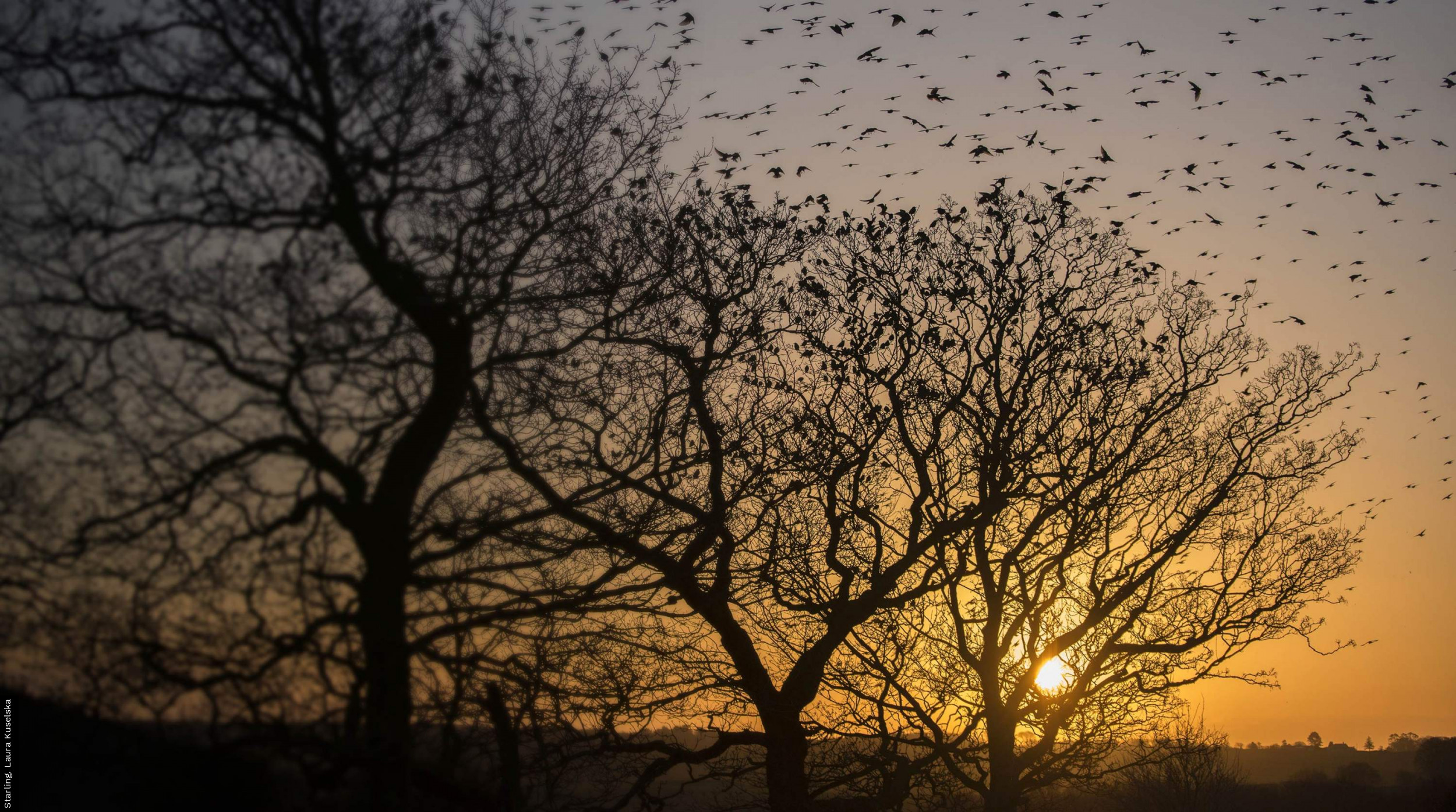Birds of Conservation Concern
Commonly referred to as the UK Red List for birds, the status of birds has now been reviewed five times, covering the UK, Channel Islands and Isle of Man.
The latest review was published in December 2021, as Birds of Conservation Concern 5 (BOCC5).
This updates the last assessment in 2015. Using standardised criteria, experts from a range of bird NGOs, including BTO, assessed 245 species with breeding, passage or wintering populations in the UK and assigned each to the Red, Amber or Green Lists of conservation concern.
The same group of experts undertook a parallel exercise to assess the extinction risk of all bird species for Great Britain (the geographical area at which all other taxa are assessed) using the criteria and protocols established globally by the International Union for the Conservation of Nature (IUCN).
This resulted in the assessment of 235 regularly occurring species (breeding or wintering or both), the total number assessed differing slightly from BOCC5 due to different rules on the inclusion of scarce breeders and colonisation patterns. The results of this second IUCN assessment (IUCN2) are provided in the same paper as BOCC5.
Read a summary of BOCC5How the lists are decided
The BOCC assessment is based on the most up-to-date evidence available. Criteria include conservation status at global and European levels. Within the UK, criteria include:
- Historical decline
- Trends in population and range
- Rarity
- Localised distribution
- International importance
Golden Oriole (previously Red-listed but which has not bred in the UK since 2009) now joins a Black List of eight other species now considered to have ceased breeding in the UK (including Serin, Temminck’s Stint and the once widespread Wryneck).
Four new species that have more recently become sufficiently established, as well as Yellow-browed Warbler (no longer considered a scarce migrant), were assessed by BOCC5 – Little Bittern, Cattle Egret, Great White Egret and Black-winged Stilt – and all went onto the Amber list due to criteria related to scarcity and localisation.
The IUCN assessment process uses the same underlying data on population trends and population size but the time periods over which change is assessed differs and is linked to generation length and also population size. With their focus on extinction risk, the IUCN assessments also consider the potential for populations in Great Britain to be rescued by immigration from increasing populations in surrounding geographical areas.
The growing Red List
This update shows that the UK’s bird species are increasingly at risk, with the Red List growing from 67 to 70. By contrast, the first Red List, published in 1996, had only 36 species.
Eleven species have been Red-listed for the first time in 2021:
- Due to worsening declines in breeding populations (Greenfinch, Swift, House Martin, Ptarmigan, Purple Sandpiper and Montagu’s Harrier)
- Due to worsening declines in non-breeding wintering populations (Bewick’s Swan, Goldeneye, Smew and Dunlin)
- Due to assessment by IUCN criteria as Globally Vulnerable (Leach’s Petrel) and due to evidence of severe declines since 2000 based on new surveys on St Kilda, which holds more than 90% of the UK’s population
The evidence for the changes in the other species comes from the UK’s key monitoring schemes such as BTO/JNCC/RSPB Breeding Bird Survey (BBS) for terrestrial birds, the BTO/RSPB/JNCC Wetland Bird Survey (WeBS) for wintering populations and the Rare Breeding Bird Panel (RBBP) for scarce breeding species such as Purple Sandpiper.
From Green to Red
Two species moved directly from the Green to Red List: Greenfinch and Ptarmigan.
Increasingly severe declines in Greenfinch numbers have been reported in BBS reports for more than a decade, and the initial regional pattern of declines was associated with outbreaks of the disease Trichomonosis. This disease of the digestive tract is widespread in Greenfinch populations across Europe and may also be starting to affect other species such as Collared Dove, Sparrowhawk and Chaffinch.
A species of montane uplands, Ptarmigan is a difficult species to census and data are scarce, but an analysis of game bag data for this quarry species revealed a long-term decline of more than 80% since the 1960s, in agreement with the loss of range revealed by Bird Atlas 2007–11 and the sensitivity to climate change of this montane species.
The IUCN assessment resulted in 108 (46%) of regularly occurring species being assessed as threatened with extinction in Great Britain, meaning that their population status was classed as Critically Endangered, Endangered, or Vulnerable, as opposed to Near Threatened or of Least Concern. Of those 108 species, 21 were considered Critically Endangered, 41 Endangered and 46 Vulnerable.
There is considerable overlap between the lists but unlike the Red List in BOCC5, IUCN2 highlights the vulnerability of some stable but small and hence vulnerable populations as well as declines in species over much shorter recent time periods, as seen for Chaffinch and Swallow.
What kinds of birds are in the most trouble?
How does the Red List break down across habitats or taxonomic groupings?
Unlike previous BOCC assessments, where there was a clearer pattern of influx to the Red List, with upland and woodland species joining the already listed farmland species, this update is more of a mixed bag. However, the worsening status of Afro-Palearctic migrants continues with two aerial insectivores – Swift and House Martin – joining other migrants such as Cuckoo and Nightingale on the Red List. Although deteriorating conditions on the wintering grounds and on stopover sites are likely factors, the reliance of many long-distance migrants on insects and other invertebrates suggests that declines in those could also play a role.
The other group joining the Red List also encompasses migrants: in this case, wintering wildfowl and waders that breed at higher latitudes and to the east, but winter in the UK. Climate change and milder winters in regions such as the Baltic Sea have resulted in many of these species being less likely to migrate as far west and south as the UK, in a pattern termed 'short-stopping'. This is likely the case for Red List newcomers Dunlin and Smew, but can be further complicated by broader declines in populations, as is known for the Eastern flyway populations of Bewick’s Swan.
Can conservation action work?
There is also better news.
White-tailed Eagle no longer qualifies for ‘historical decline’ thanks to further recovery of the breeding population and intense conservation efforts. Similarly, five previously Red-listed species (Pied Flycatcher, Song Thrush, Black Redstart, Grey Wagtail and Redwing) have shown modest but sufficient improvements in breeding population status to have moved from Red to Amber. Red Grouse, Mute Swan and Kingfisher also move from Amber to Green.
Overall, the Amber List has increased from 96 in BOCC4 to 103 in BOCC5, this difference reflecting both negative changes (moves to the Red List) and positive changes (moves to the Green List). The Green list, now 72 species long, includes a range of common garden species such as Blue Tit, Blackbird and Robin, and saw a net loss of nine species since BOCC4.
The full lists are available in the Birds of Conservation Concern 5 summary leaflet or the full publication.










Share this page